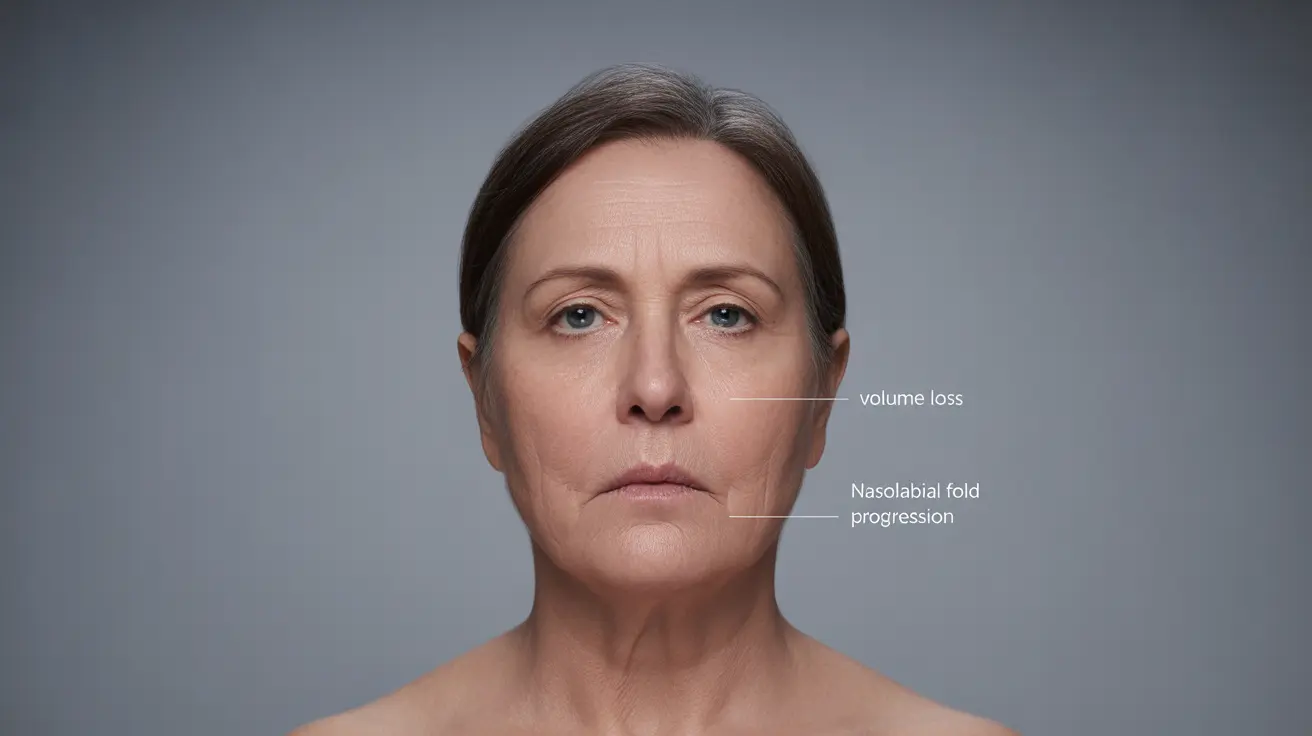The rising popularity of Ozempic for weight loss has brought attention to an unexpected side effect known as "Ozempic face" - a condition where rapid weight loss leads to facial volume loss and accelerated aging appearance. This phenomenon affects some individuals using semaglutide medications and requires understanding to manage effectively.
While Ozempic's effectiveness for weight management is well-documented, it's important to recognize and address these aesthetic concerns to maintain both health and confidence during treatment. Let's explore the causes, symptoms, and ways to manage this condition.
What Causes Ozempic Face?
Ozempic face occurs primarily due to the rapid weight loss associated with semaglutide medications. When people lose significant weight quickly, facial fat pads diminish along with body fat. These fat pads normally provide structural support and volume to the face, contributing to a youthful appearance.
Several factors contribute to this condition:
- Accelerated breakdown of facial fat deposits
- Loss of collagen support structures
- Decreased skin elasticity
- Rapid volume reduction in facial tissues
Recognizing the Signs
Understanding the visual changes associated with Ozempic face can help individuals identify and address concerns early. Common signs include:
- Increased facial hollowing, particularly in the cheeks
- More prominent nasolabial folds (smile lines)
- Sagging skin around the jawline
- More visible facial bones and structure
- Overall aged appearance despite weight loss success
Prevention Strategies
While some facial changes during weight loss may be inevitable, several strategies can help minimize their impact:
Lifestyle Modifications
Focus on these key areas to maintain facial health:
- Stay well-hydrated
- Maintain a balanced, nutrient-rich diet
- Practice gentle facial exercises
- Protect skin from sun damage
- Get adequate sleep
Skincare Routine
Implement a comprehensive skincare approach:
- Use high-quality moisturizers
- Apply sunscreen daily
- Include collagen-supporting products
- Consider retinoids for skin maintenance
- Use gentle, non-stripping cleansers
Treatment Options
Various professional treatments can help address Ozempic face:
Non-Invasive Treatments
- Dermal fillers
- Collagen-stimulating treatments
- Radio frequency therapy
- Ultrasound treatments
- LED light therapy
Professional Care
Working with qualified healthcare providers can help develop an effective treatment plan. Consider consulting:
- Dermatologists
- Plastic surgeons
- Aesthetic medicine specialists
- Licensed skincare professionals
Frequently Asked Questions
What causes the hollowed, aged appearance known as Ozempic face during weight loss? The hollowed appearance occurs when rapid weight loss leads to significant reduction in facial fat pads, combined with natural aging processes and decreased collagen production.
What are common signs and symptoms of Ozempic face? Common signs include increased facial hollowing, more prominent nasolabial folds, sagging skin around the jawline, and an overall more aged appearance despite successful weight loss.
How can I prevent or minimize facial sagging and wrinkles while losing weight on Ozempic? Prevention strategies include maintaining proper hydration, following a nutrient-rich diet, protecting skin from sun damage, using quality skincare products, and considering preventive treatments under professional guidance.
What treatment options are available to restore facial volume and reduce sagging caused by Ozempic face? Treatment options include dermal fillers, collagen-stimulating treatments, radiofrequency therapy, ultrasound treatments, and various professional skincare procedures performed by qualified practitioners.
Is the facial aging effect from Ozempic face permanent, and can it improve after stopping the medication? The effects aren't necessarily permanent. Some natural improvement may occur after weight stabilization, and various treatments can help restore facial volume and skin quality. However, results vary among individuals.




